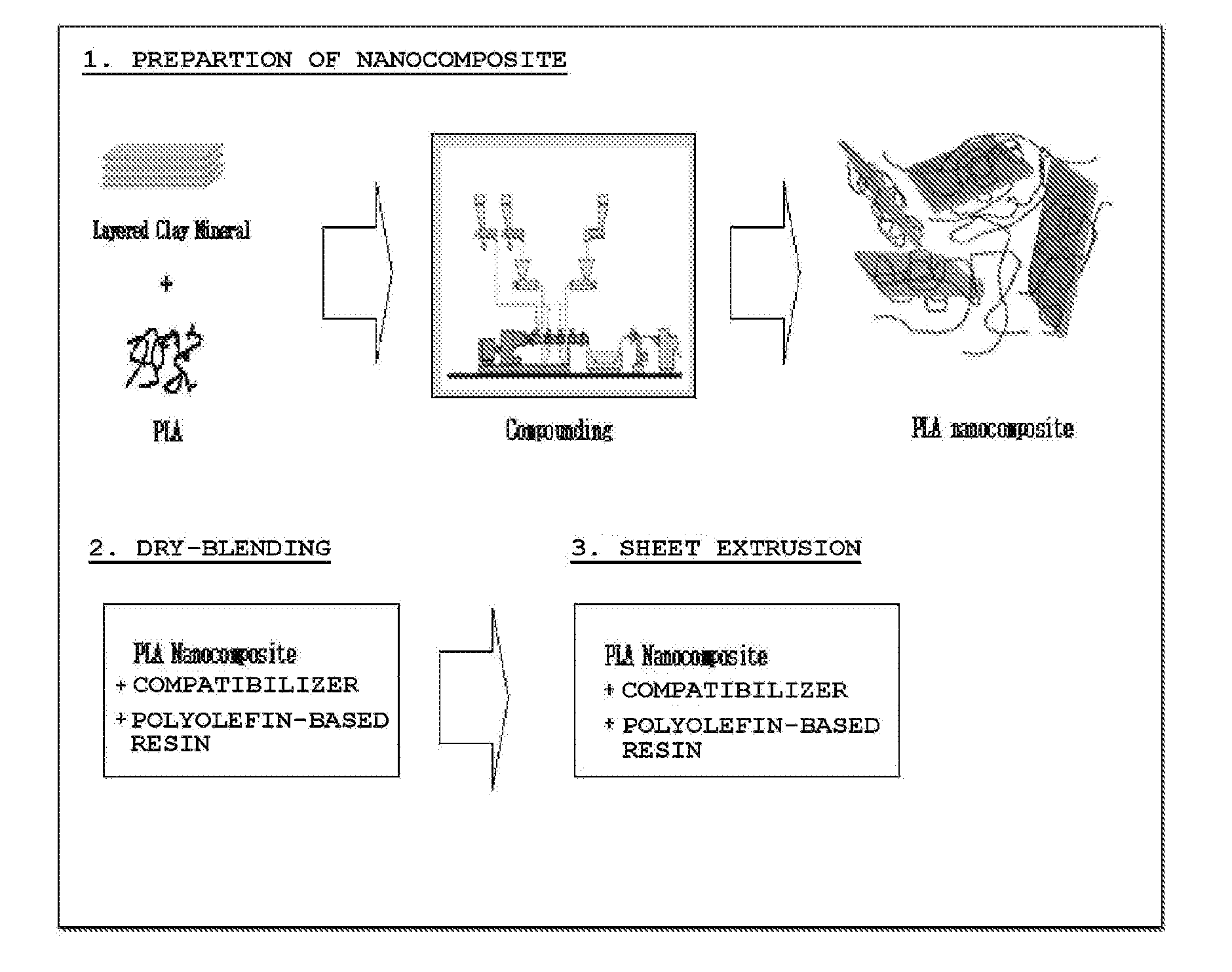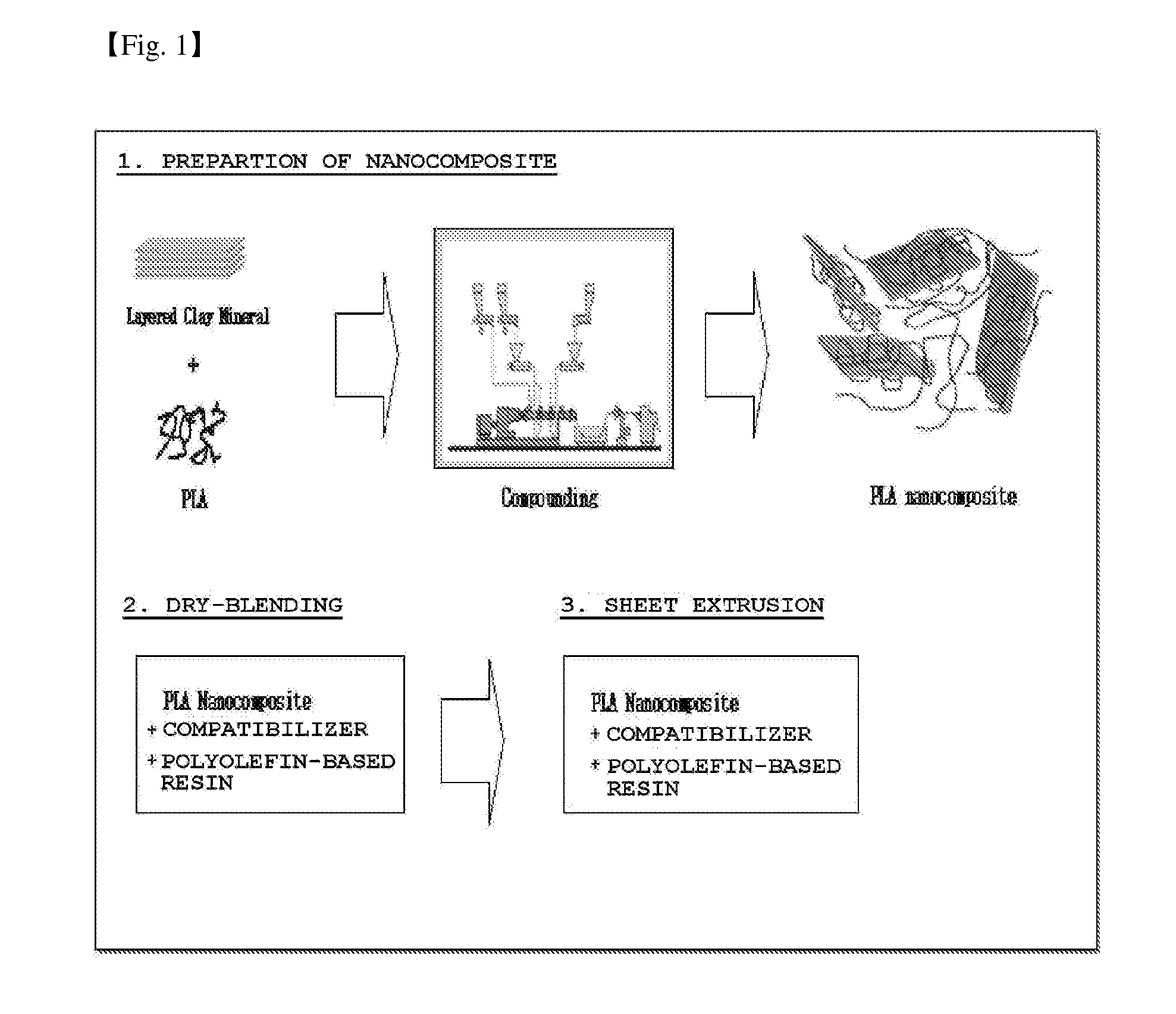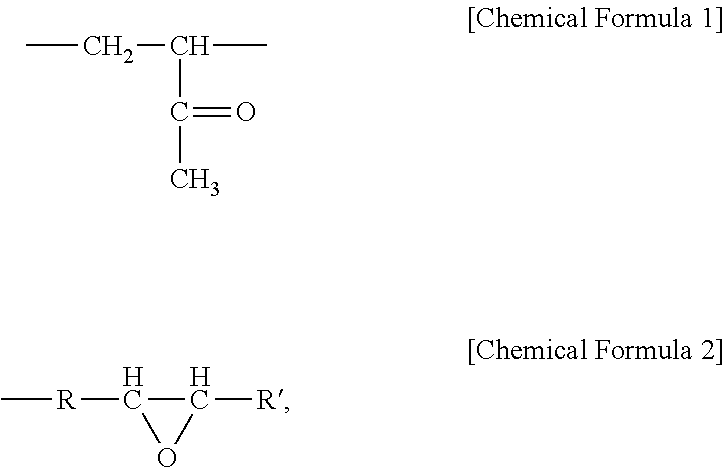Clay-reinforced poly(lactic acid)-polyolefin alloy composition
a polylactic acid and polyolefin alloy technology, applied in the field of polylactic acidpolyolefin alloy composition, can solve the problems of increasing environmental pollution, global warming, and reducing the life of landfill sites, and achieves excellent gas and moisture barrier properties and easy dispersion.
- Summary
- Abstract
- Description
- Claims
- Application Information
AI Technical Summary
Benefits of technology
Problems solved by technology
Method used
Image
Examples
experimental examples
[0046]500 μm thick films prepared in Examples 1 to 3 and Comparative Examples 1 to 6 were left standing for 24 hours under conditions of a temperature of 23° C. and a relative humidity of 50%, and oxygen barrier properties were then measured by using a gas permeability tester (Mocon OX-TRAN 2 / 20, U.S.A), and the same films were left standing for one day under conditions of a temperature of 38° C. and a relative humidity of 100%, and moisture barrier properties were then measured by using a water vapor transmission rate tester (Mocon PERMATRAN 3 / 33, U.S.A). The results thereof are presented in the following Table 4.
TABLE 4Oxygen barrier propertyMoisture barrier propertyCategory(cc, 500 μm / m3, day, atm)(cc, 500 μm / m3, day, atm)Example 1541.9Example 2842.76Example 3341.36Comparative1601.2Example 1Comparative3300.31Example 2Comparative1201.2Example 3Comparative1502.52Example 4Comparative3233.2Example 5Comparative1092.15Example 6
[0047]As shown in the results of Table 4, it may be confirm...
PUM
| Property | Measurement | Unit |
|---|---|---|
| temperature | aaaaa | aaaaa |
| temperature | aaaaa | aaaaa |
| temperature | aaaaa | aaaaa |
Abstract
Description
Claims
Application Information
 Login to View More
Login to View More - R&D
- Intellectual Property
- Life Sciences
- Materials
- Tech Scout
- Unparalleled Data Quality
- Higher Quality Content
- 60% Fewer Hallucinations
Browse by: Latest US Patents, China's latest patents, Technical Efficacy Thesaurus, Application Domain, Technology Topic, Popular Technical Reports.
© 2025 PatSnap. All rights reserved.Legal|Privacy policy|Modern Slavery Act Transparency Statement|Sitemap|About US| Contact US: help@patsnap.com



